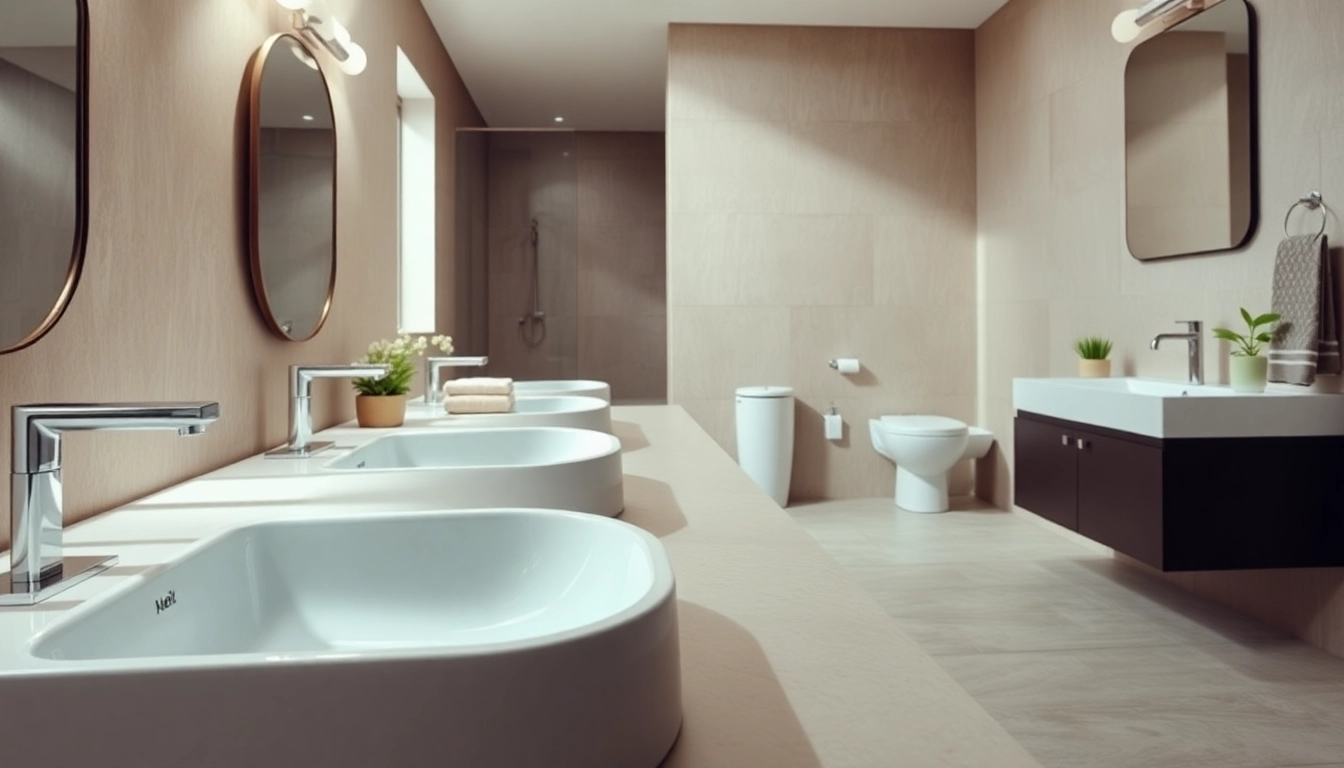Understanding Landscape Design Services
Landscape design services are essential for creating aesthetically pleasing and functional outdoor spaces. These professional services relate to the planning and execution of outdoor areas, considering various elements like plants, terrain, structures, and more. Through landscape design, property owners can significantly enhance their exterior environments, whether residential gardens, public parks, or commercial properties. Engaging a landscape design service can not only elevate the visual appeal of a space but also improve its functionality and harmony with the natural ecosystem.
What is Landscape Design?
Landscape design is a multi-faceted profession that combines art and science, focusing on the outdoor environment’s design and planning. At its core, landscape design aims to harmonize human-made structures with the natural landscape. This includes understanding site conditions, plant selections, spatial planning, and the use of materials to create a cohesive outdoor setting. A landscape designer typically starts with site analysis, assessing the topography, climate, soil conditions, and existing vegetation before developing concepts that cater to the client’s desires, functional needs, and ecological sustainability.
Importance of Professional Landscape Design Services
Engaging a professional landscape design service offers numerous benefits. Firstly, it ensures that a project is executed by someone with the expertise to blend artistic vision with environmental responsiveness. Professionals bring knowledge of plants, materials, and construction techniques that may not be readily available to amateurs. Importantly, well-designed landscapes can increase property value, improve energy efficiency through strategic plant placement, and contribute to a healthier environment by promoting biodiversity. Furthermore, experts can navigate local zoning laws and sustainable practices, making the design process smoother and more compliant.
Common Elements in Landscape Design
Several key elements contribute to effective landscape design. These include:
- Plant Selection: Choosing the appropriate flora based on climate, soil type, and aesthetic goals.
- Hardscape Features: Incorporating non-plant elements like paths, patios, walls, and water features that create structure and usability.
- Lighting: Using outdoor lighting to highlight features, enhance safety, and extend the usability of the space at night.
- Color and Texture: Combining various colors and surface textures to create visual interest and depth.
- Spatial Layout: Planning the arrangement of elements to ensure a pleasant flow and functional space.
Types of Landscape Design Services Available
Landscape design services can be tailored to meet the specific needs of residential and commercial clients. Understanding the different types of services helps potential clients choose the best fit for their projects.
Residential Landscape Design Solutions
Residential landscape design focuses on transforming private outdoor spaces into beautiful, functional extensions of the home. Services may include garden design, outdoor living spaces, and installation of features such as decks, patios, and irrigation systems. Homeowners often seek to create cozy retreats, entertainment areas, or spaces for recreation, emphasizing harmony with the environment while meeting personal aesthetic preferences. A well-designed residential landscape can significantly enhance outdoor enjoyment and provide a peaceful retreat from urban life.
Commercial Landscape Design Services
For commercial properties, landscape design plays a crucial role in creating inviting spaces that attract customers and enhance the overall image of a business. Services include the design of parking lots, sidewalks, outdoor gathering areas, and gardens that resonate with the company’s brand and philosophy. Moreover, commercial landscape solutions often prioritize low maintenance, sustainability, and environmental performance, incorporating native species and materials that reduce water usage and promote biodiversity.
New Trends in Landscape Design Services
As societal values evolve, so do landscape design trends. Current trends include:
- Sustainable Practices: Increasing focus on eco-friendly materials, native plants, and sustainable practices that promote biodiversity.
- Outdoor Living Spaces: Expanding the use of outdoor kitchens, living rooms, and fire pits to blur the lines between indoor and outdoor spaces.
- Smart Technology: Integration of technology for automated irrigation, lighting, and maintenance systems that enhance user experience.
- Minimalism: Designing simpler, cleaner spaces that emphasize open areas and fewer materials for easy maintenance.
- Wellness Landscaping: Incorporating elements that promote well-being, such as zen gardens, healing gardens, and sensory gardens.
Choosing the Right Landscape Design Service for Your Project
Choosing the right landscape design service involves careful consideration of several factors to ensure alignment with your vision and project goals. Here’s a guide to making an informed choice.
Identifying Your Needs and Goals
The first step in selecting a landscape design service is to clearly define your needs and goals. Consider what you wish to achieve with your outdoor space. Are you looking to create a serene garden, a vibrant entertainment area, or a space that promotes sustainability? Understanding your vision will help you articulate your expectations to potential landscape designers.
Evaluating Landscape Design Service Providers
Once you have a clear goal in mind, it’s time to evaluate different landscape design service providers. Look for businesses with relevant experience and expertise in projects similar to yours. Review their portfolios and client testimonials to gauge their aesthetic and quality of work. Meeting candidates in person can also provide insight into their communication style and willingness to collaborate.
Questions to Ask Before Hiring
Before making a decision, it’s essential to ask potential service providers a series of questions, such as:
- What is your design process, and how do you involve clients?
- Can you provide references or examples of completed projects similar to mine?
- How do you handle permits, zoning issues, and local regulations?
- What is your estimated timeline and budget for this project?
- How do you address sustainability in your designs?
Best Practices in Landscape Design Implementation
Effective implementation is critical to the success of any landscape design project. Adhering to best practices during planning and execution can lead to superior results.
Planning and Design Phases
The planning phase is crucial in landscape design. This includes site analysis, conceptual development, and the production of detailed plans. Involve stakeholders early in the design process, ensuring that their inputs are considered. This collaborative approach helps mitigate misunderstandings and aligns expectations. Once plans are completed, obtaining necessary permits and preparing for execution is essential.
Choosing the Right Plants and Materials
Selecting the right plants and materials is fundamental to creating a sustainable landscape. Prioritize local or native plants that adapt well to the climate and require less maintenance. Consider the soil type and drainage when selecting materials for hardscapes, such as patios and walkways. Some materials may reflect or absorb heat, affecting the microclimate of your landscape, which is an essential aspect to evaluate during the design process.
Maintaining Your Landscape Post-Design
After installation, maintaining the landscape is crucial for long-term success. Develop a maintenance schedule that includes regular watering, pruning, and fertilizing. Educate yourself about the plant species chosen, their growth patterns, and specific care requirements to ensure they thrive. Regular maintenance will help retain the aesthetic appeal and functionality of your landscape while promoting a healthy ecosystem overall.
Measuring Success in Landscape Design
Measuring the success of a landscape design project involves assessing visual impact, environmental benefits, and the financial aspects of the investment. Understanding what metrics to evaluate can help justify the costs involved and improve future projects.
Assessing Visual Impact and Aesthetic Appeal
A primary measure of success in landscape design is its visual impact. This can be assessed through client feedback, professional critiques, and public opinion where applicable. Consider how well the landscape complements the surrounding environment and architecture. Elements like color, texture, and form play a significant role in creating an appealing outcome. Additionally, versatility in the design will increase its aesthetic capability over time through changing seasons.
Evaluating Environmental Benefits
Another critical metric is the environmental benefits derived from the landscape design. This includes contributions to biodiversity, improved air quality, and energy conservation. A well-constructed landscape should also promote water conservation and minimize runoff. Consider implementing monitoring systems to assess how your design is performing over time in terms of environmental health.
Monitoring Costs and Return on Investment
Finally, it’s essential to keep track of costs and the return on investment (ROI) associated with the landscape design. Analyze how much the project costs versus the benefits achieved, such as increased property value, energy savings, or enhanced usability of the space. Seasonal trends can also impact ROI, making it crucial to evaluate performance regularly to maximize the value of the investment.



